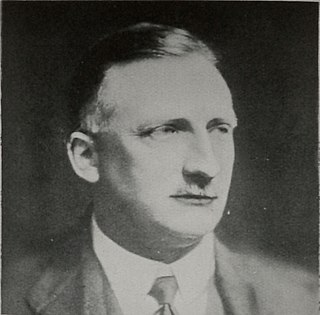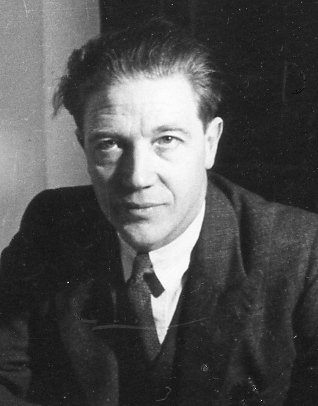Related Research Articles

Sir Oswald Ernald Mosley, 6th Baronet was a British aristocrat and politician who, during the 1920s and 1930s, rose to fame when, having become disillusioned with mainstream politics, he turned to fascism. He was a member of parliament and later founded and led the British Union of Fascists (BUF).

The British Union of Fascists (BUF) was a British fascist political party formed in 1932 by Oswald Mosley. Mosley changed its name to the British Union of Fascists and National Socialists in 1936 and, in 1937, to the British Union. In 1939, following the start of the Second World War, the party was proscribed by the British government and in 1940 it was disbanded.
The New Party was a political party briefly active in the United Kingdom in the early 1930s. It was formed by Sir Oswald Mosley, an MP who had belonged to both the Conservative and Labour parties, quitting Labour after its 1930 conference narrowly rejected his "Mosley Memorandum", a document he had written outlining how he would deal with the problem of unemployment.

The Imperial Fascist League (IFL) was a British fascist political movement founded by Arnold Leese in 1929 after he broke away from the British Fascists. It included a blackshirted paramilitary arm called the Fascists Legion, modelled after the Italian Fascists. The group espoused antisemitism and the dominance of the 'Aryan race' in a 'Racial Fascist Corporate State', especially after Leese met Nazi Party propagandist Julius Streicher, the virulently racist publisher of Der Stürmer; the group later indirectly received funding from the Nazis. Although it had only between 150 and 500 members at maximum, its public profile was higher than its membership numbers would indicate.

Rotha Beryl Lintorn Lintorn-Orman was the founder of the British Fascisti, the first avowedly fascist movement to appear in British politics.

Edward Jeffrey Hamm was a leading British fascist and supporter of Oswald Mosley. Although a minor figure in Mosley's prewar British Union of Fascists, Hamm became a leading figure after the Second World War and eventually succeeded as leader of the Union Movement after Mosley's retirement.

Alexander Raven Thomson, usually referred to as Raven, was a Scottish politician and philosopher. He joined the British Union of Fascists in 1933 and remained a follower of Oswald Mosley for the rest of his life. Thomson was considered to be the party's chief ideologue and has been described as the "Alfred Rosenberg of British fascism".
Robert Forgan was a British politician who was a close associate of Oswald Mosley.
Edward Ingram Watkin was an English Catholic philosopher, pacifist and writer.
John Angus Macnab (1906–1977) was a British fascist politician who embraced Roman Catholicism under the influence of G. K. Chesterton and Hilaire Belloc. He was a close associate of William Joyce and later became known as a Perennialist writer on Medieval Spain and a translator of Latin and Greek poetry.

Robert Byron Drury Blakeney, generally known as R. B. D. Blakeney, was a British Army officer and fascist politician. After a career with the Royal Engineers, Blakeney went on to serve as President of the British Fascists.
British fascism is the form of fascism which is promoted by some political parties and movements in the United Kingdom. It is based on British ultranationalism and imperialism and had aspects of Italian fascism and Nazism both before and after World War II.
Neil Lanfear Maclean Francis Hawkins was a British writer and politician who was a leading proponent of British fascism in the United Kingdom both before and after the Second World War. He played a leading role in the British Union of Fascists and controlled the organisational structure of the movement.

The British Fascists, formed in 1923, was the first political organisation in the United Kingdom to claim the label of fascist, although the group had little ideological unity apart from anti-socialism for much of its existence, and was strongly associated with conservatism. William Joyce, Neil Francis Hawkins, Maxwell Knight and Arnold Leese were amongst those to have passed through the movement as members and activists.

Wilfred Risdon was a British trade union organizer, a founder member of the British Union of Fascists and an antivivisection campaigner. His life and career encompassed coal mining, trade union work, First World War service with the Royal Army Medical Corps (RAMC), political and animal welfare activism.

The Battle of Stockton, took place on 10 September 1933 at the Market Cross in the High Street of Stockton-on-Tees, County Durham, England. It was a clash between members of the British Union of Fascists (BUF) and anti-fascist demonstrators from the small local Communist Party and National Unemployed Workers Movement (NUWM).

William Weir Gilmour (1905–1998), was a Scottish politician who was associated with five different political parties; the Independent Labour Party, the New Party, the Scottish Democratic Fascist Party, the Labour and Co-operative party and the Liberal Party.
The Battle of Carfax (1936) was a violent skirmish in the city of Oxford between the British Union of Fascists (BUF) and local anti-fascists, trade unionists, and supporters of the Labour Party and the Communist Party of Great Britain. The battle took place inside Oxford's Carfax Assembly Rooms, a once popular meeting hall owned by Oxford City Council which was used for public events and located on Cornmarket Street.
References
- ↑ G. Bowd, Fascist Scotland - Caledonia and the Far Right, Edinburgh: Birlinn, 2013, pp. 32-34
- ↑ T. Linehan, British Fascism 1918-39: Parties, Ideology and Culture, Manchester University Press, 2000, p. 133
- 1 2 3 Kushner, Tony, and Kenneth Lunn. Traditions of Intolerance: Historical Perspectives on Fascism and Race Discourse in Britain . Manchester: Manchester University Press, 1989. p. 199
- ↑ Gallagher, Tom. Edinburgh Divided: John Cormack and No Popery in the 1930s . Edinburgh: Polygon, 1987. p. 204
- 1 2 3 4 5 6 The Scotsman - Monday 12 June 1933 pg.7
- ↑ Villis, Tom (2013). British Catholics and Fascism: Religious Identity and Political Extremism Between the Wars. Palgrave Macmillan. p. 66. ISBN 978-1-137-27419-9.
- ↑ Blackshirts in Red Scotland: an analysis of fascism and its opponents in inter-war Scotland (PDF) (MA). University of Glasgow. February 2012. 0806402.
- ↑ Villis, Tom (2013). British Catholics and Fascism: Religious Identity and Political Extremism Between the Wars. Palgrave Macmillan. p. 10. ISBN 978-1-137-27419-9.